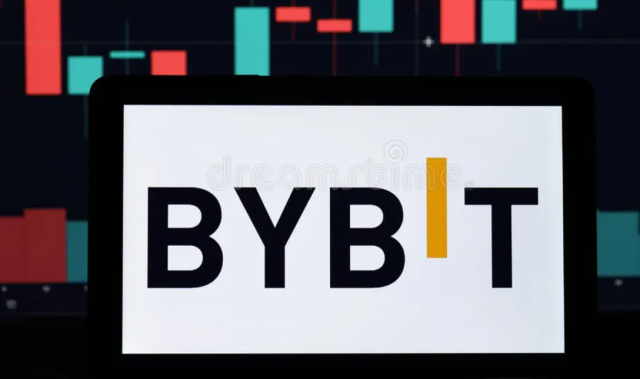In iGaming, fast transactions now define quality. In 2025, players expect deposits and withdrawals to go through without delay. A few years ago, that level of delay was fine—now it’s enough to make players walk away. This change stems from new banking tech that removes bottlenecks. Operators who’ve built systems for immediate payments are better placed to grow, retain users, and handle increased demand.

Evolving Expectations Around Payment Options
As digital habits shift, users now care more about getting things done quickly than sticking with a familiar name. This has prompted operators to expand the range of payment methods they support, adapting to what players already use elsewhere. Most players now expect to see payment options they already use elsewhere—such as mobile wallets, instant transfers, or even prepaid vouchers. Some prefer services integrated with open banking, while others lean toward flexible options like e-wallets or pay-by-phone.
Among the most widely used are casinos that accept credit cards, offering a blend of speed, trust, and accessibility. One reason credit cards remain popular is the added flexibility they offer, particularly when it comes to managing deposits across multiple devices. Many platforms that support this method also allow users to claim welcome bonuses or participate in ongoing promotions without additional steps. Payments go through fast, feel familiar, and usually come with built-in protections shoppers already trust. For those comparing options, this credit card deposits overview helps clarify which sites combine speed, security, and promotional access most effectively.
It’s part of a bigger shift—how people use and trust financial tools is evolving fast. Flexibility and familiarity now shape expectations, influencing which services gain traction and why. As these habits take root, the systems built around them are evolving in tandem, driven by both user demand and broader market conditions.
A Broadening Spectrum of Accepted Payment Formats
As preferences evolve, so too does the diversity of financial gateways in online gaming. No longer reliant on the conventional card networks, platforms are extending their offerings to include a variety of services such as instant bank payments, virtual wallets and regionally adapted systems. In the UK, this trend is particularly pronounced, with providers increasingly responsive to local demand for smooth, reliable alternatives to plastic cards.
Incorporating a wide range of formats is not merely a matter of convenience. It signals strategic awareness. Platforms that serve a mix of users from different regions avoid putting all their eggs in one payment basket and are better insulated against regulatory shifts. From an investment angle, the ability to absorb and integrate new payment styles is a clear indicator of operational agility.
Crypto’s Influence, Despite Limited Application
Cryptocurrencies continue to generate interest, even where regulatory frameworks remain firm. Even though UK law still keeps crypto gambling in check, digital coins continue to shape how things are done behind the scenes, digital assets are still shaping decisions in back-end payment design. Operators are exploring indirect methods—such as crypto-to-fiat gateways—that allow engagement without breaching licensing conditions.
While full integration may be unlikely under current legislation, the technical infrastructure for crypto handling is being quietly constructed in parallel. Firms that manage to future-proof in this way without triggering compliance alarms exhibit notable foresight. For investors, the presence of secure blockchain compatibility—paired with regulatory caution—may reflect leadership with both vision and discipline.
Automation Enhancing Financial Security
Modern payment systems now depend heavily on automation, particularly in the domain of fraud detection and compliance. The speed at which iGaming operates makes manual oversight increasingly ineffective. To keep up, many now rely on smart systems that catch red flags and verify users on the fly.
It’s not just about dodging fraud—these systems also keep the trust factor high, especially in high-volume platforms where small inconsistencies can trigger larger issues. From a risk management perspective, firms investing in automated protection mechanisms demonstrate a serious commitment to platform integrity. For investors seeking low-exposure environments, robust digital security remains non-negotiable.
Fintech Partnerships Reshaping Payment Architecture
Fintech firms in the UK are reshaping how digital payments and backend systems are built. For iGaming platforms, this shift has made in-house development less appealing. Instead, many now rely on proven solutions from external providers.
Working with fast growing fintech companies allows operators to move faster, reduce errors and handle payments more efficiently. These collaborations improve performance where it matters—behind the scenes—without disrupting the user journey.
As demands on speed and stability grow, the link between fintech innovation and operational strength becomes harder to ignore. The most adaptable firms are already building on that momentum.
Responsive Design for Mobile-Centric Transactions
As the shift towards portable gaming accelerates, the payment journey is being rebuilt from the ground up for mobile-first use. Simplicity, speed and biometric integration are now core demands, not optional extras. Deposits and payouts must operate smoothly within limited screen space, yet still meet high standards for precision and security.
Passwords are quietly disappearing. In their place, fingerprints and facial scans now open the door—quicker, cleaner, less effort. At the same time, long approval steps are fading. Instead, transactions are confirmed in a moment, often before the screen dims. These shifts aren’t about novelty. They’re practical decisions, made to hold a user’s focus in a space where hesitation means drop-off.
For anyone looking closely at platform performance, payment flow on mobile tells its own story. The smoother it runs, the more likely users are to return. Where the experience feels clunky or behind the curve, activity slows, and over time, so does revenue per user.
Adherence to Regulation Through Design
No discussion of payment infrastructure is complete without reference to compliance. In jurisdictions like the UK, where oversight is rigorous, payment systems must satisfy conditions related to transparency, identity verification and financial monitoring. Operators are now embedding these requirements directly into their transaction frameworks to avoid legal exposure.
Instead of tacking on compliance at the end, smart firms bake it into the core design. Features such as step-based verification, automated AML screening, and permanent logging are becoming standard in modern systems. For financial backers, the presence of built-in governance tools reflects a company prepared for long-term scalability within regulated environments.
Investment Implications of Infrastructure Quality
By 2025, a gaming company’s approach to payments is no longer a footnote—it’s a central pillar of performance. Platforms that combine speed, reliability, and regulatory alignment are pulling ahead, not just in attracting new users, but also in retaining them. Behind the scenes, robust transaction systems are driving both operational resilience and market reach.
For those analysing where real value lies, surface indicators no longer tell the full story. The real signal is how payment frameworks are built, managed and adapted over time. When firms take ownership of this core layer—rather than outsourcing it entirely—they tend to respond more effectively to changing habits and evolving compliance pressures. At this stage, staying current with payment developments isn’t optional. It’s fundamental.


 Hot Features
Hot Features













